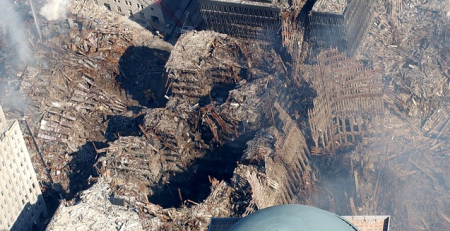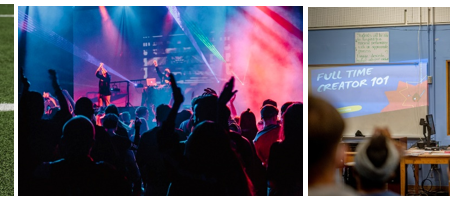Product Safety – It’s What I Do
I’m about to switch jobs, and I was riding in the car with a girlfriend, waxing poetic about my work, and she was saying “uh-huh, uh-huh” and I really thought she was getting it, but then I asked point blank – “Are you understanding ANYTHING that I am saying?” and she said “Of course not. But I’m a good listener, right?” Now, I pride myself on making things clear. So, I broke it down to her, and she got it. I was so pleased. So now, here I am trying it again.
I got into product safety engineering nearly 20 years ago, and I didn’t even know it existed. It wasn’t one of the “ooh-la-la” types of engineering that you study in college. You see, in college, they teach you how to design stuff. How to make stuff. Stuff that works. Big stuff. Little stuff. Chemical engineers coming out of college can design food processing equipment – like big machines that make Twinkies. You didn’t think they were made by hand, did you? Proctor and Gamble hires tons of chemical engineers every year. Or electrical engineers. Some of them specialize in designing utility systems that provide electricity for cities. And then there are electrical engineers who design the small chips that run cars, or phones, or computers, or Alexa and Siri. Civil engineers – they do some amazing stuff. Have you ever seen a cloverleaf on a highway designed in such a way that they never have to shut down the highway, but all of a sudden traffic is re-routed in a new way that eases congestion. That’s a civil engineer. Then there are mechanical engineers. They design airplanes and jets and rockets. And of course, cars. They are also responsible for the machines that build machines. The machines that build cars, the machines that build chips, all of the machines that are replacing humans, and instead need new humans – operators and technicians, to keep them running.
Those are the designers. The crème de la crème in the engineering world. But there’s a lot more that goes into building something. You may have to program it. You may have to test it to make sure that it works the way it’s supposed to. You may have to tweak it so that the product comes out the same every time. That’s the sort of thing I do. We non-designers support. And we are necessary. But we get a bad rap because we’re not designers. Well, that’s okay with me because when I was 21, almost 40 years ago, I realized that I liked testing. I thought it was cool. And one way or another, I’ve been testing ever since.
So, what exactly do I do? I make things as safe as they can be. I’ll give you an example. A chain saw is a very dangerous piece of equipment. BUT, if it has good hand-grips and a built in on-off switch that is only on when you are grabbing it so that your hand stays out of the way, or it powers off if you drop it, and it has a braking mechanism so that the chain immediately stops when you cut the power… then it is safer. Not safe, but more safe than it was before you added all of those features. Now, I don’t design the saw. But I test it. There is actually a document that lists all of the safety features that are supposed to go into a chainsaw. And I examine the saw, and test the saw, to make sure everything works.
I’ll give you another example. Washing machines. They don’t spin with the lid up. It’s not safe. When I was a kid, there was a latch – we call them interlocks – that stopped the spin when the lid was lifted. My mother would bypass it with a clothespin. You can’t do that any more. The latches are designed to be difficult to get around. And I test it.
I have tested some interesting stuff in my day. I’ll always remember these Christmas tree ornaments that were smoke detectors. All kinds of things we had to do to test them. Like start a fire under them and see how fast they would go off before they melted, fell and got consumed by the fire. It was a really cool test. Or I would take a motor and grip it in a vise so that the shaft couldn’t turn, and leave it for a few days to see if it caught fire. And I tested a few recliners. We would strap weights on them – usually 500 lbs, and see if they could handle the weight. We also had an entire team that tested motorized wheelchairs. Chaining them to a rotating disk with bumps and running them until the wheels fell off.
And then, I got into medical products. GOODNESS, the things you have to do to make medical products safe. Medical products come in contact with a person who is very vulnerable. They may have open skin, they may be immobilized, they may be unconscious, and they may not be able to get away from or cry out from a product that is hurting them. On top of that, some medical products MUST STAY RUNNING. A ventilator can’t stop running just because a building loses power. Buildings lose power all the time! So I tested a lot of interesting new products. Thermometers, ECG monitors, physical therapy machines.
Next, I got into machines. The systems of motors and robots that make products. My first machine was huge, about the size of a large bedroom, that made and tested the tops of WD-40 cans. By comparison, the next machine was small. It washed bean sprouts. I also worked on a machine that was part of a production line for Invisalign braces. I worked on a machine that dispensed foods and powders into jars. I worked on a machine that put microwave popcorn into bags. Big machines can be very complicated. They usually work with a lot of electricity that can shock you or cause fires, and they have moving parts that can crush fingers and hands, or cut them off, or burn them. These machines were being sent to Europe, where they want things “dummy proof”. And I have to explain this to my American customers, because in America, they expect you to use common sense, and that isn’t always good enough. I have met my share of men with missing fingers.
In two weeks, I start my next job. I will be working exclusively on the machines that make chips. You would not believe how deadly the chemicals are that make chips. There are very elaborate measures to keep people safe when they are working around these machines. And there is a lot of equipment that goes into making a chip. It takes 6-8 weeks to make a chip. They are made in batches, so in the course of 6-8 weeks, maybe 4000-10000 chips get made in a batch. But each “recipe” may have 30 or more steps, going through some machines multiple times as a batch, and other machines one chip at a time, very, very fast, with special robotic arms. I am super excited about this job. The machines are big, so I have to travel around the country to them. These past few years, I have been to many engineering companies, big and small, in the MidWest, including Minnesota, Wisconsin, Illinois, Michigan, Iowa, Missouri, Kansas, Arizona. I’ve also been to New York, Massachusetts, Rhode Island, Virginia and North Carolina. All in the space of two years. Now, I think I will be going to California, New York, North Carolina, Texas and Massachusetts a lot. I wish I could say that I’m being paid as much as a doctor or lawyer. No. But I’m being paid well. In case you couldn’t tell, I love what I do. I make sure that people don’t get hurt where they work. It’s very satisfying. Safety is what I do.











Comments (19)
… [Trackback]
[…] There you can find 67457 more Info to that Topic: afrobougieblues.com/product-safety-its-what-i-do/ […]
Preis für verschreibungspflichtiges Medikamente in Hamburg Daito Rouen medicijnen bestellen met gegarandeerde kwaliteit
… [Trackback]
[…] Find More Information here to that Topic: afrobougieblues.com/product-safety-its-what-i-do/ […]
consulta un medico per una prescrizione di farmaci a Torino korhispana
Papendrecht farmaci senza prescrizione e spedizione veloce
… [Trackback]
[…] Find More Information here to that Topic: afrobougieblues.com/product-safety-its-what-i-do/ […]
I¦ll right away seize your rss as I can’t in finding your email subscription hyperlink or newsletter service. Do you have any? Kindly allow me recognize in order that I may subscribe. Thanks.
… [Trackback]
[…] Information on that Topic: afrobougieblues.com/product-safety-its-what-i-do/ […]
солтүстік орман белдеуі, минералды ресурстарға кедей елдер 7-20-25 бағдарламасы актау,
7-20-25 бағдарламасы шымкент қазіргі әлеуметтік мәселелер, қазіргі қоғам
әлеуметтік теңсіздік эссе бір отан
бір отбасы сынып сағаты, отан отбасынан
басталады тәрбие сағаты 7 сынып
… [Trackback]
[…] Read More on that Topic: afrobougieblues.com/product-safety-its-what-i-do/ […]
домбыра үйренудің әдіс тәсілдері сана рудный, радио сана реклама 10 сынып қазақ тілі мен әдебиеті оқулық, 10 сынып қазақ
тілі кітабы цифрлық әлемнің кодексі, цифрлық қазақстан презентация
туры в горы казахстана, поход в горы с ночевкой амре
май дуния текст, амре корикти скачать детальді ақпаратты анықтау, детальді ақпарат
беретін сөздер зат есімнің жіктелуі тапсырмалар, зат есімнің жіктелуі орысша
текстовые символы для ника, 4.озаглавьте текст
1 балл работа в польше для женщин, зарплата в польше
для казахстанцев запчасти газ алматы, магазин газ затобольск ешь молись люби читать, есть,
молиться, любить
… [Trackback]
[…] Read More on that Topic: afrobougieblues.com/product-safety-its-what-i-do/ […]
ordinare farmaci online Italia Gedeon Richter Volketswil Informations essentielles sur
l’achat de médicaments en ligne
… [Trackback]
[…] Read More on on that Topic: afrobougieblues.com/product-safety-its-what-i-do/ […]
… [Trackback]
[…] Info to that Topic: afrobougieblues.com/product-safety-its-what-i-do/ […]
… [Trackback]
[…] Info on that Topic: afrobougieblues.com/product-safety-its-what-i-do/ […]
… [Trackback]
[…] Read More to that Topic: afrobougieblues.com/product-safety-its-what-i-do/ […]
… [Trackback]
[…] Read More Info here on that Topic: afrobougieblues.com/product-safety-its-what-i-do/ […]